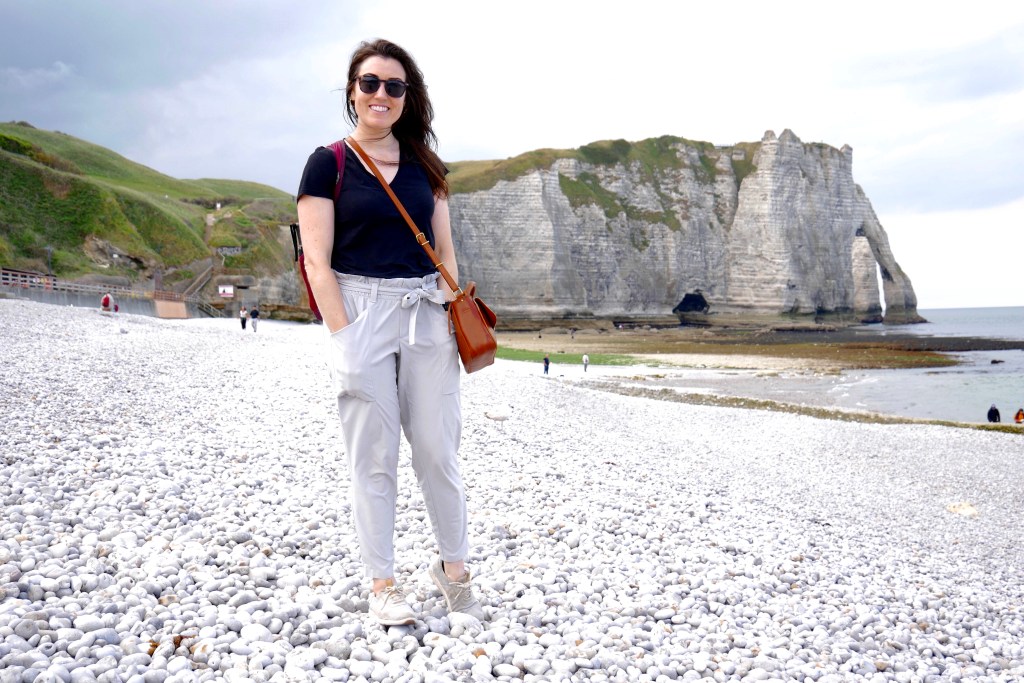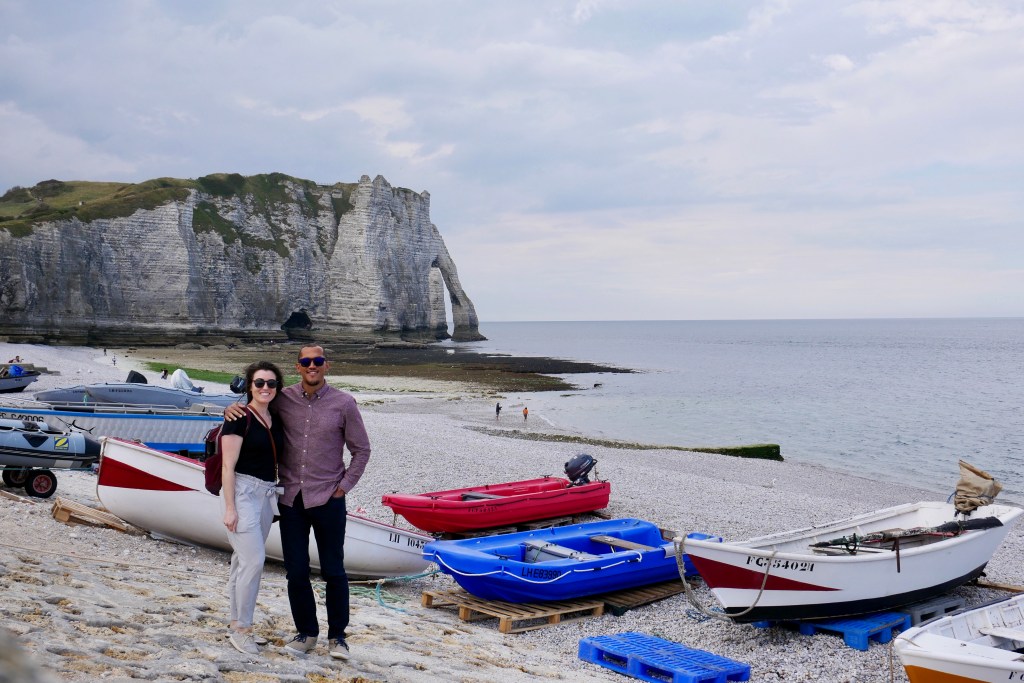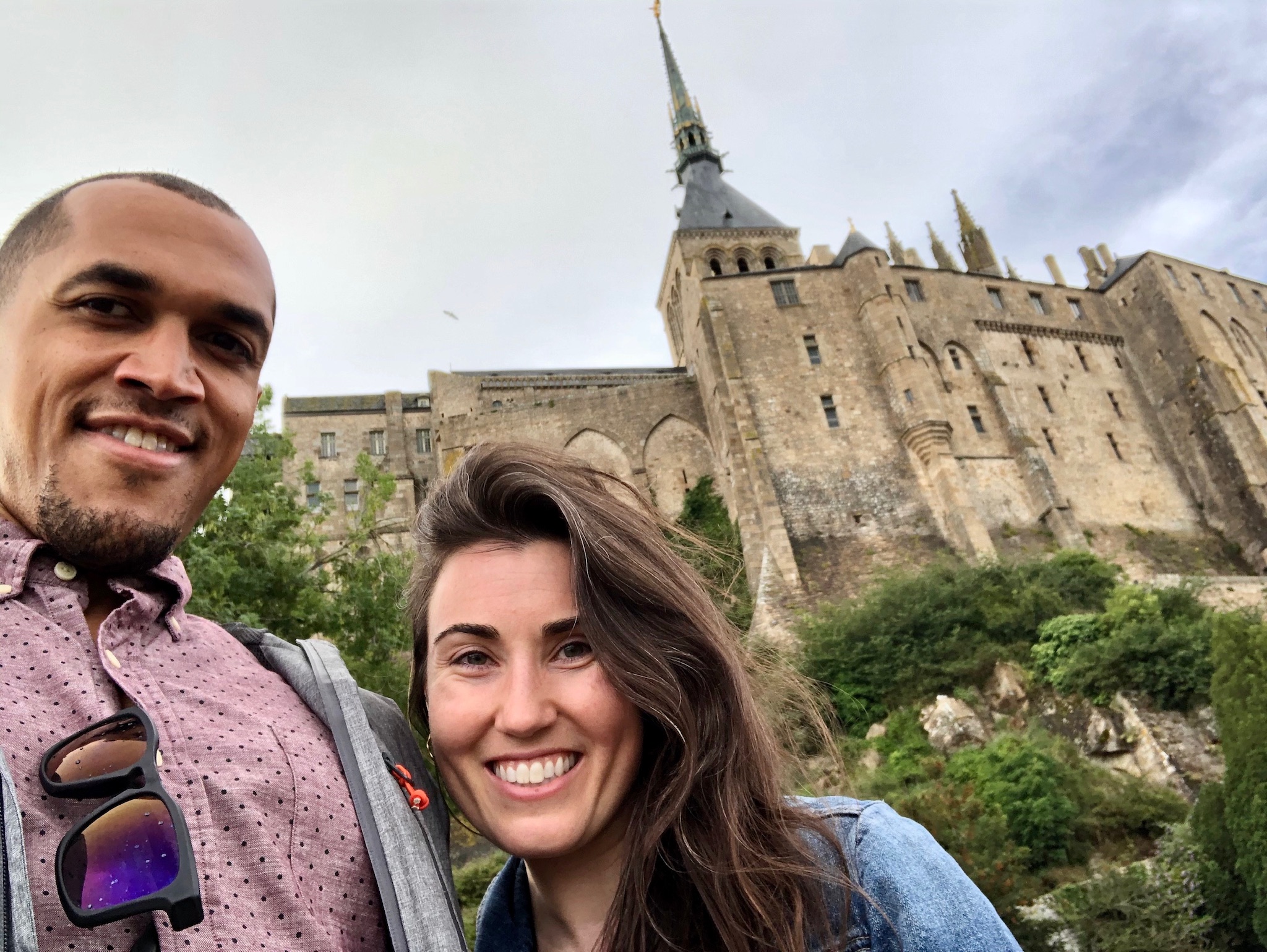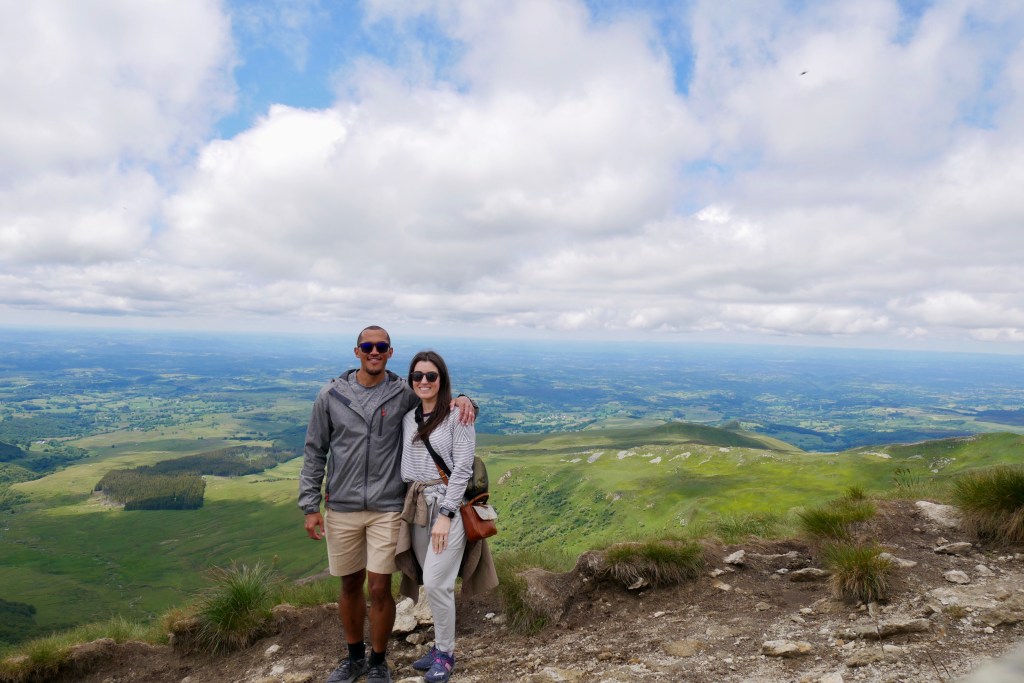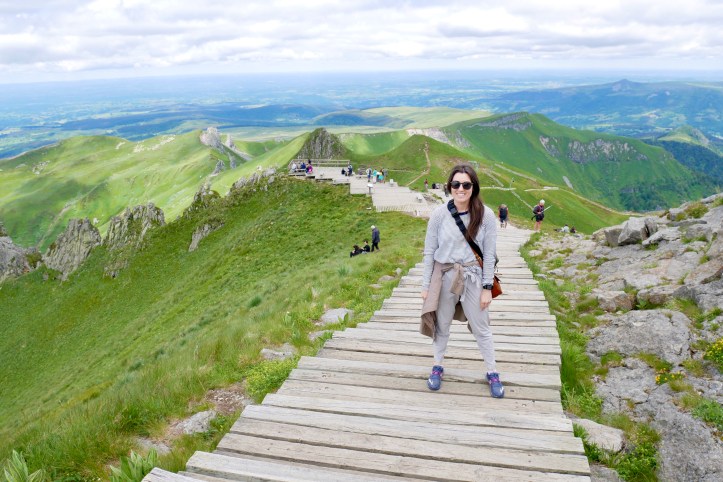Even though we’ve been in the US for a few months already, I’ve been looking forward to setting aside time to recap our final road trip that we squeezed into the brief window of time between the reopening of many EU borders and our departure from Belgium. Belgium and France were among a handful of EU countries that began welcoming back tourists from select countries on June 15th. A day after this reopening, we loaded our luggage into Dan’s Volvo and headed out of the country for the first time in months with face masks and hand sanitizer at the ready as we crossed in France.
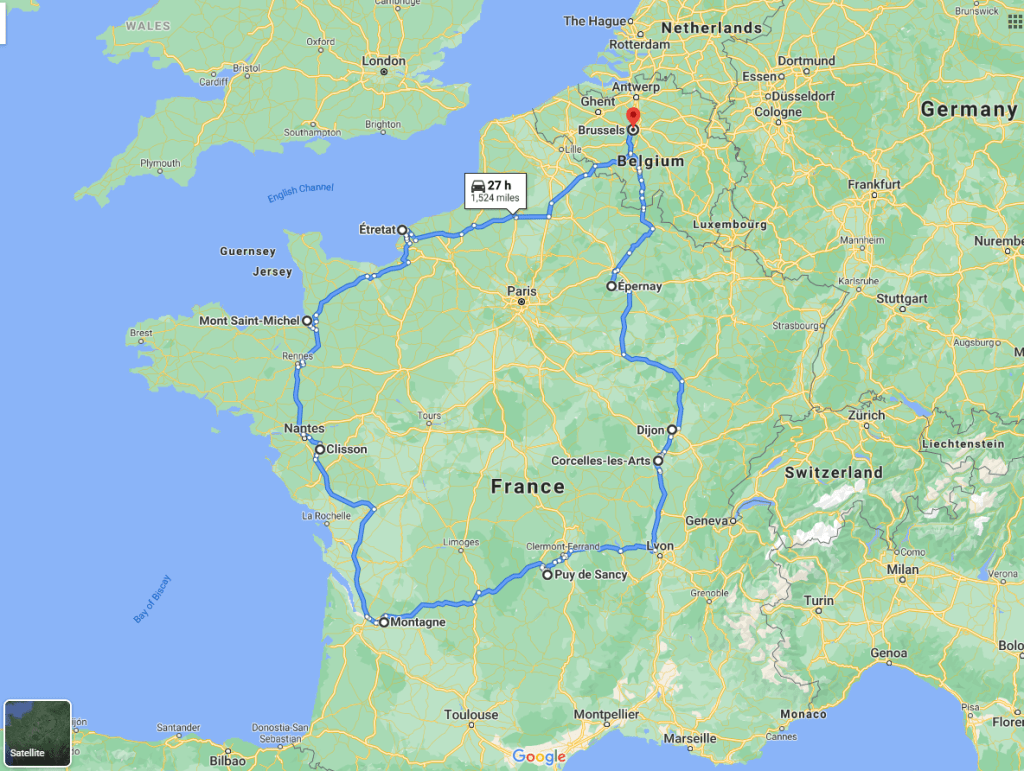
Throughout the trip we encountered far less tourists than normal, and practically no other U.S. travelers, on account of the wide-reaching travel ban enacted by the EU. In fact, we received a few strange looks when our very American accents were detected but felt extremely welcome after explaining that we had not in fact swam across the ocean or snuck into Europe illegally, but rather were residents of Brussels.
Knowing it was our final grand Euro trip for the foreseeable future, we committed to covering a lot of ground from the Normandy region in the north to Bordeaux and Burgundy in southwest and east central France, respectively. We spread the commute over four of the six total vacation days, ambitiously averaging about seven hours of time in the car or at stops for food and sight-seeing along the way. It always seems to us take longer than anticipated to reach our destination, but fortunately, France has free and well-maintained rest stops, which I suppose should be expected when you are paying around 20 Euros in tolls each day.

Day 1 started with our departure from Brussels in the direction of the northern coast of France. About five hours into the drive we were ready for our first stop – lunch and a bit of sightseeing in Étretat. This small seaside town in Normandy is known for its dramatic chalk cliffs and rock formations that jut into the water. Arriving in the mid-afternoon, we were relieved to find a small café still serving lunch – croque monsieur – but didn’t have enough time to walk the paths on top of the cliffs. After enjoying the views from the beach, we headed out of town as the storm clouds rolled in.
We arrived at our first destination just before seven that evening and rushed to check in to our Airbnb before heading to the famous Mont Saint-Michel, a tidal island home to a gorgeous abbey located about one kilometer off the shoreline. A bridge now connects this UNESCO World Heritage Site to the mainland, allowing for exceptional viewing from a distance and easy access to the island during both low and high tide. Mont Saint-Michel has been both a center of pilgrimage and a prison but remained unconquerable by England during the One Hundred Years War. The medieval abbey atop the island, visible from miles away, was constructed in the 11th century.

I would have loved to marvel at the abbey slowly rising from the water on the two mile walk from the parking lot to the island, but in the interest of time it made more sense to take the free shuttle over. Upon arrival, we were a bit disappointed to find the abbey closed and no restaurants, bars, or hotels open, but elated to see that we were two of the only dozen or so people touring. An amazing feat considering this site welcomes around three million tourists annually.
The light rain that greeted us upon arrival on the island subsided as we made our way up the empty cobblestone streets and climbed the stairs to the ramparts. Rounding a corner and with no other tourists in sight, we were thrilled to find a bright rainbow spanning the entire shoreline over a low tide.

In this time of coronavirus germ containment, we’ve been refraining from requesting others take our photo and I’ve been practicing the art of balancing my camera on a sturdy surface while setting the self-timer. Unfortunately, I have not perfected this technique and managed to damage the lens zoom ring while trying to capture a photo of the two of us on our way off the island. It felt like one bad stroke of luck after another when, disheartened and flustered back at the car, I paid for the overly expensive parking before the gate opened and we exited without needing to scan our pre-paid ticket. We could only laugh it off at this point and then focus on quelling our hanger (hunger + anger) as we struggled to locate an open restaurant for dinner in Pontorson.
A few laps up and down the street later, we decided to poke our heads inside Crêperie du Couesnon to check out the menu. Admittedly, we were initially put off by the limited options, but an English-speaking couple convinced us that the savory crêpes known as galettes were excellent and in fact very filling. A bottle of local cider, a burger galette for Dan, an egg and ham galette for me, a sweet caramel crêpe to share for dessert and friendly service had us feeling much better in no time.
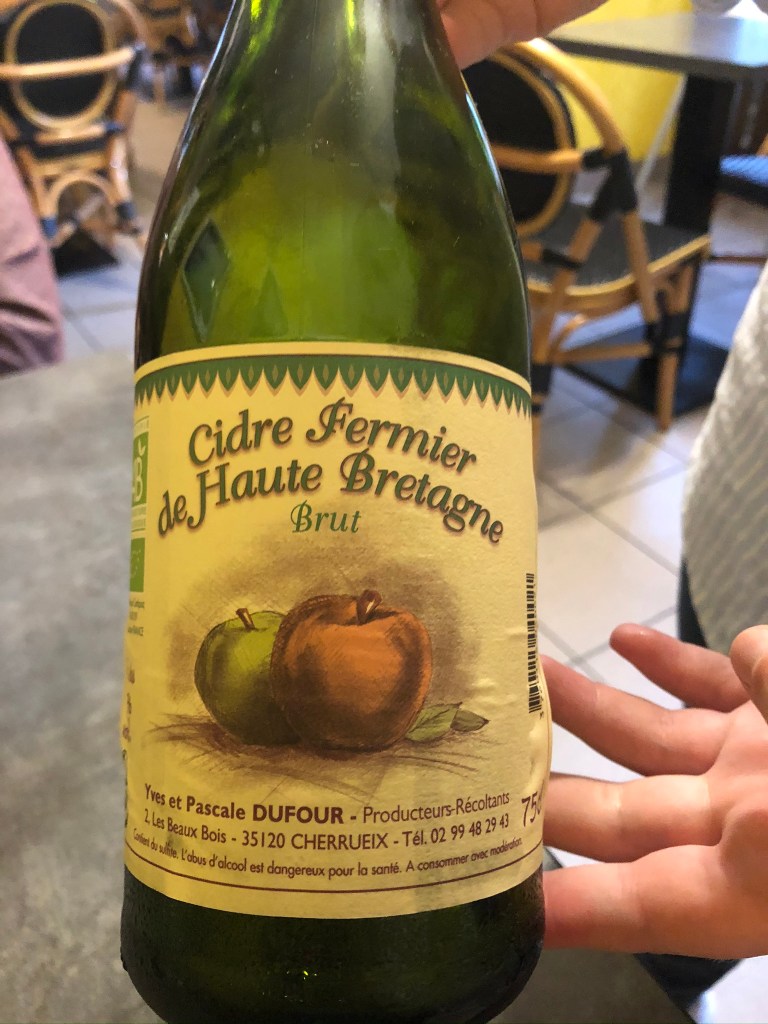
Normandy cider 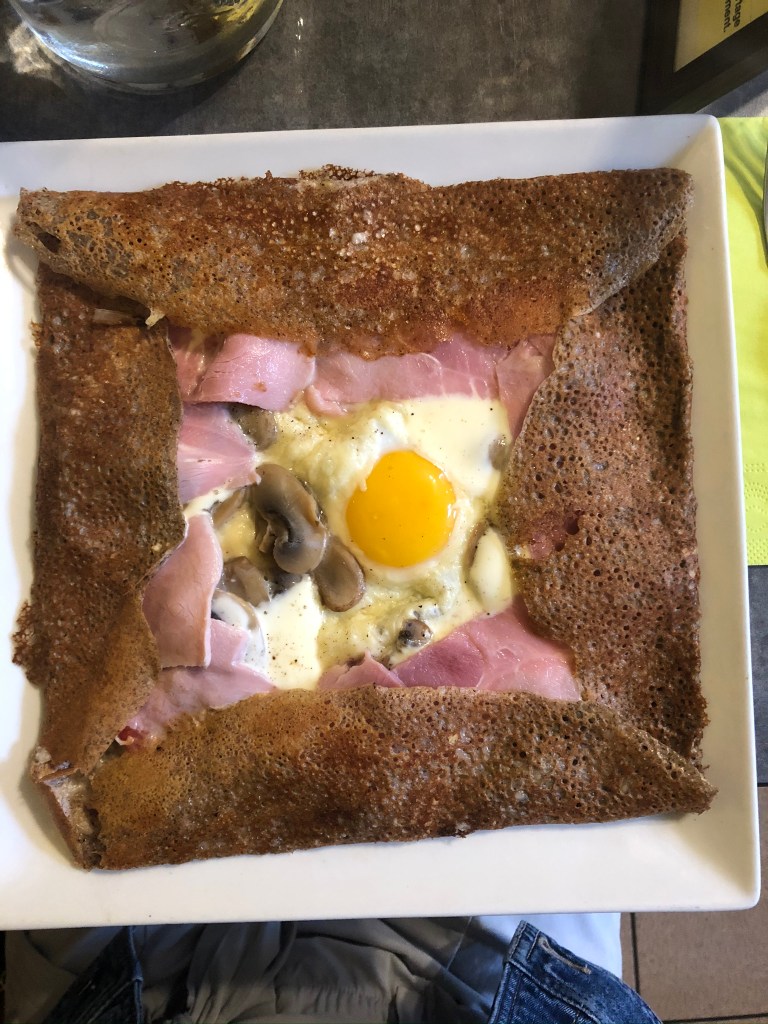
A delicious egg & ham galette for dinner
We departed dinner with the sky awash in color, and I was glad it didn’t take much to convince Dan that we should get back in the car and quickly head in the direction of Mont Saint-Michel to watch what turned out to be a gorgeous late sunset over the Normandy coast.

I got my final glimpse of Mont Saint-Michel the next morning when I embarked on a misty solo walk/jog along the Couesnon River to the dam at Barrage du Mont Saint Michel. In a final nod to the region’s famous flat pancake, we once again enjoyed galettes, this time from a vendor at the weekly market that was set up right outside the front door of the Airbnb. Heeding the vendor’s advice, we took care not to drip the melted butter, another local specialty, all over ourselves while enjoying our foil-wrapped galettes to go on a vacant bench.


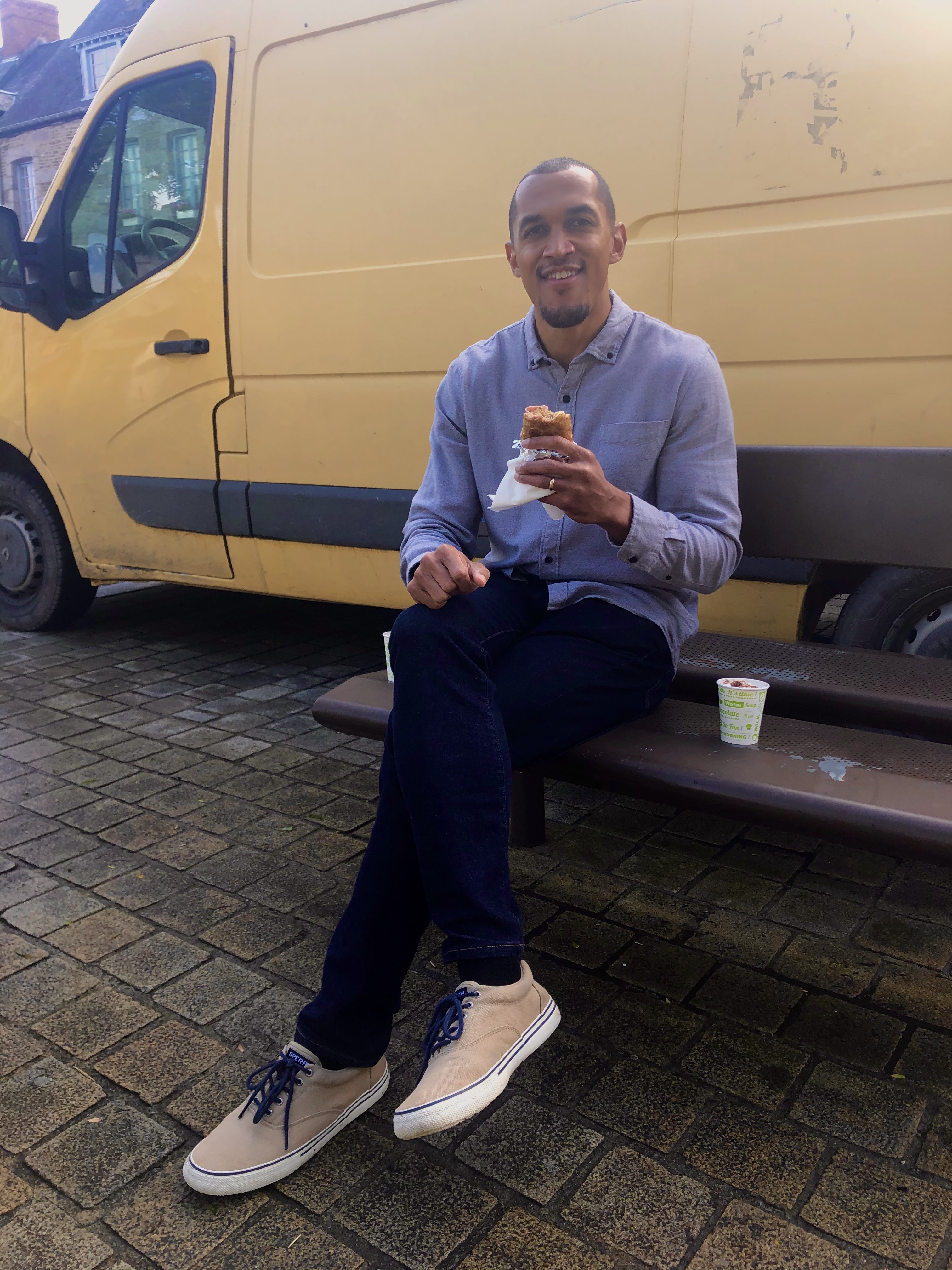
Heading south on Day 2, our next stop was in the Pays de la Loire region in the commune of Clisson for lunch at La Brasserie de Papa. Our delicious and by no means “fast food” lunch came with a view of the Tuscan-like town and ruined Château de Clisson. The area is known to have been occupied since the 11th century with much of the present castle having been built in the 13th century. After most of the commune was burned down during the counter-revolutionary uprising of the French Revolution, it was rebuilt with an abundance of inspiration from central Italy. While the château wasn’t open for visits, we did partake in a post lunch stroll around the wall, also noting a sign marking further walking trails in the area. It wasn’t the first or last time on this trip that I would wish for more time to explore.

Stop 3 – lunch at Château de Clisson 
Château de Clisson
Lush vineyards awaited us the further we drove south into the Bordeaux region, finally reaching our destination in the tiny village of Montagne near the famed vineyards of Saint-Émilion. I only know so much about wine, but Montagne-Saint-Émilion is an Appellation d’origine contrôlée (AOC) for wine in the Bordeaux wine region of France and is known for its high-quality red wines. Our Airbnb was in fact located on the edge of a vineyard and our hosts were thoughtful enough to have two bikes for guests to borrow for commuting between the vineyards.

Stop 4 – Airbnb backyard views in Montagne 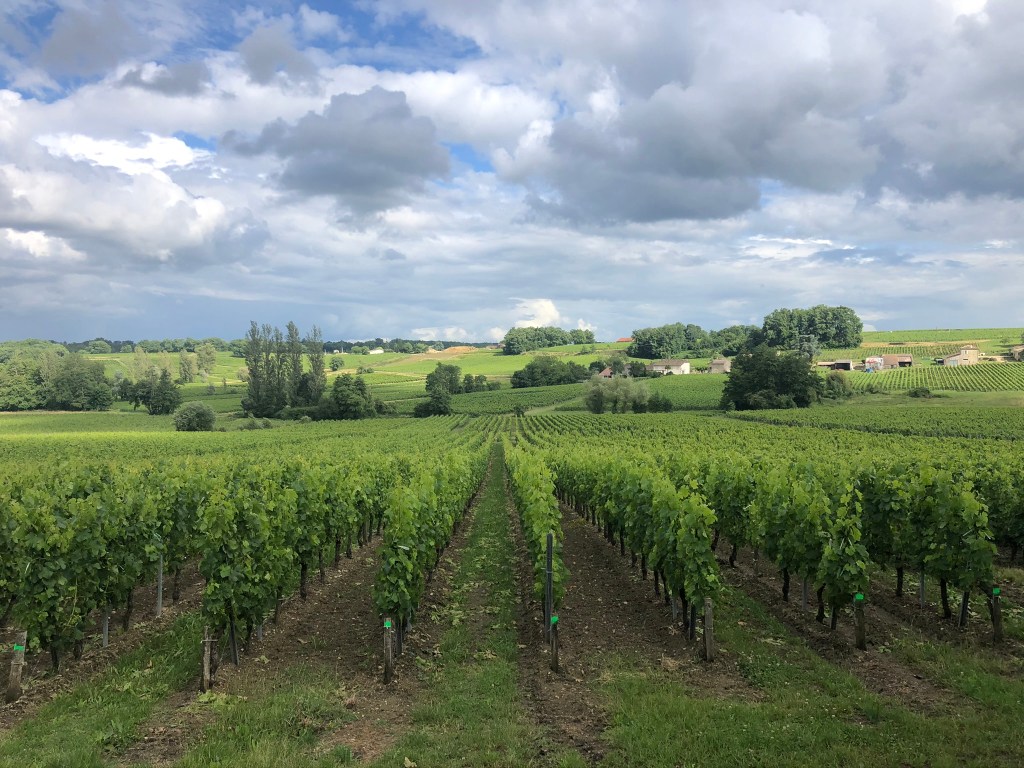
Airbnb backyard views in Montagne
After settling in, we headed into Saint-Émilion to walk around the town that is a UNESCO World Heritage Site and grab a drink before dinner. We ended up at Sous la robe wine bar where the manager was extremely welcoming and even offered us a local Bordeaux beer – Orbaie. Dan could hardly believe his luck in finding an excellent beer in wine country! Drinks were followed by dinner at La Reserve du Presbytere where we were one of only three tables of people partaking in another fabulous multi-course meal.

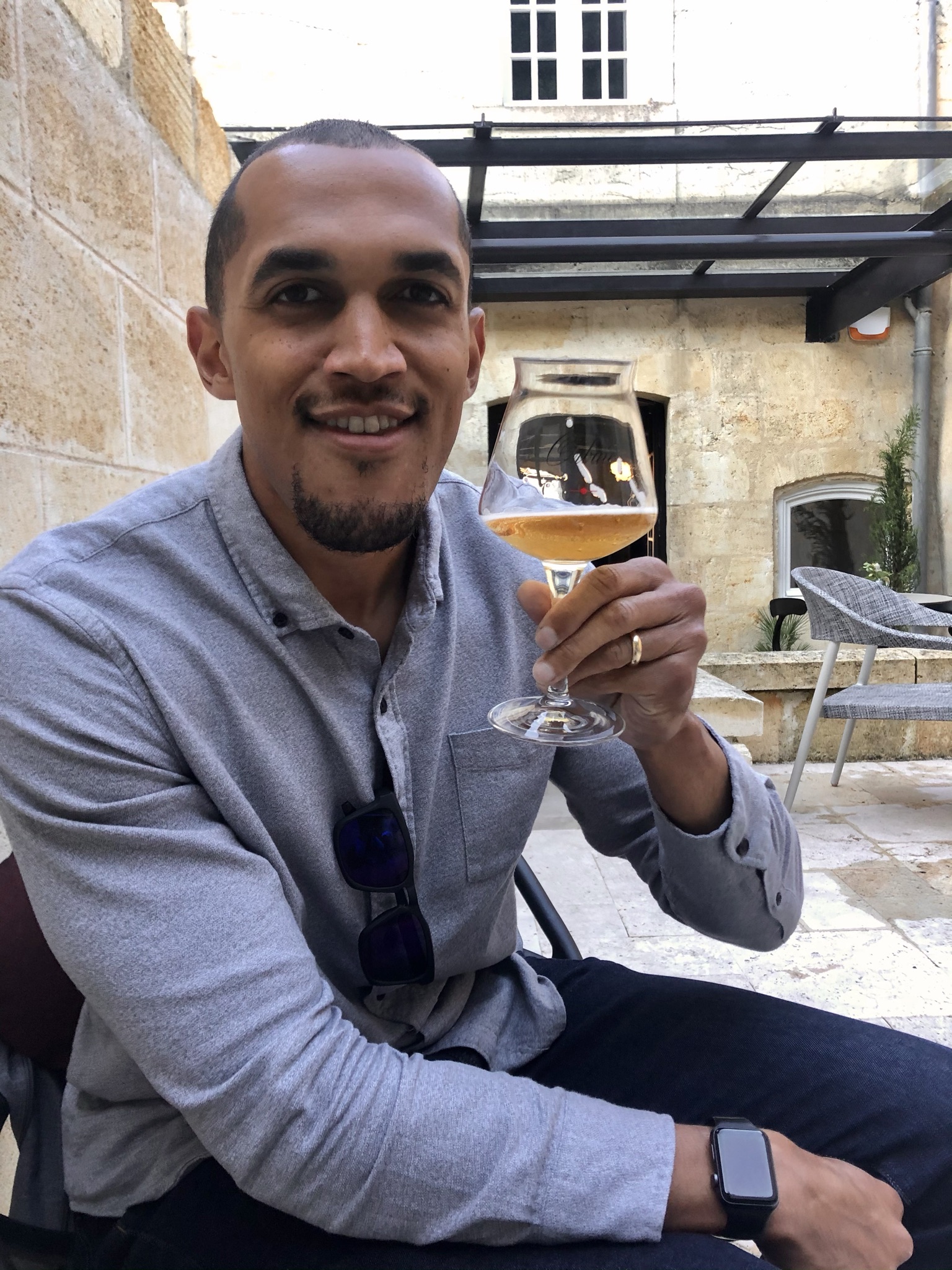
A rainy, relaxed morning had us ready to kick off for Day 3 with a hilly bike ride to lunch at La table de Catusseau. We arrived in time to dine while avoiding another round of showers but after dessert were back on our bikes on our way to our first vineyard tour at Chateau Maillet in Pomerol. We met our friendly guide Coline and could hardly believe that we not only had a private tour but were among the first visitors to the vineyard in 2020.
Coline provided ample explanations about the soil mixture (clay-limestone) and wine aging in barrels versus earthenware pots and then answered all of our questions about the different types of grapes grown in the region and just what makes the wines of Bordeaux so well-known. I learned that for AOC wines, it is forbidden to irrigate the vineyards. Irrigation increases production through larger grapes but lowers the quality of the wine.

Earthenware used to age wine at Chateau Maillet 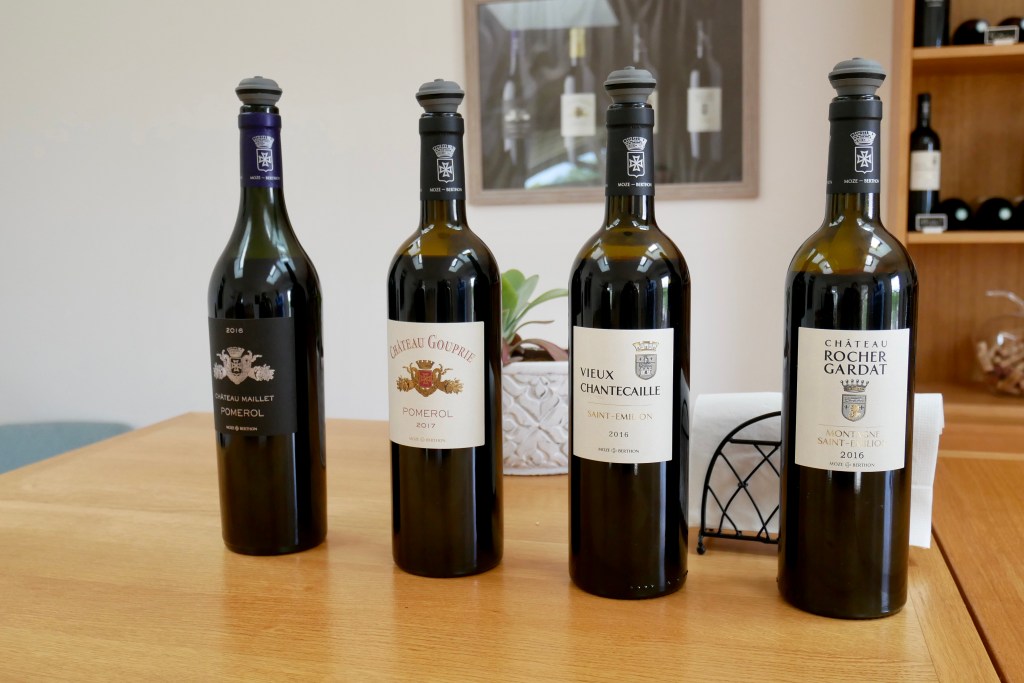
Wines sampled at Chateau Maillet 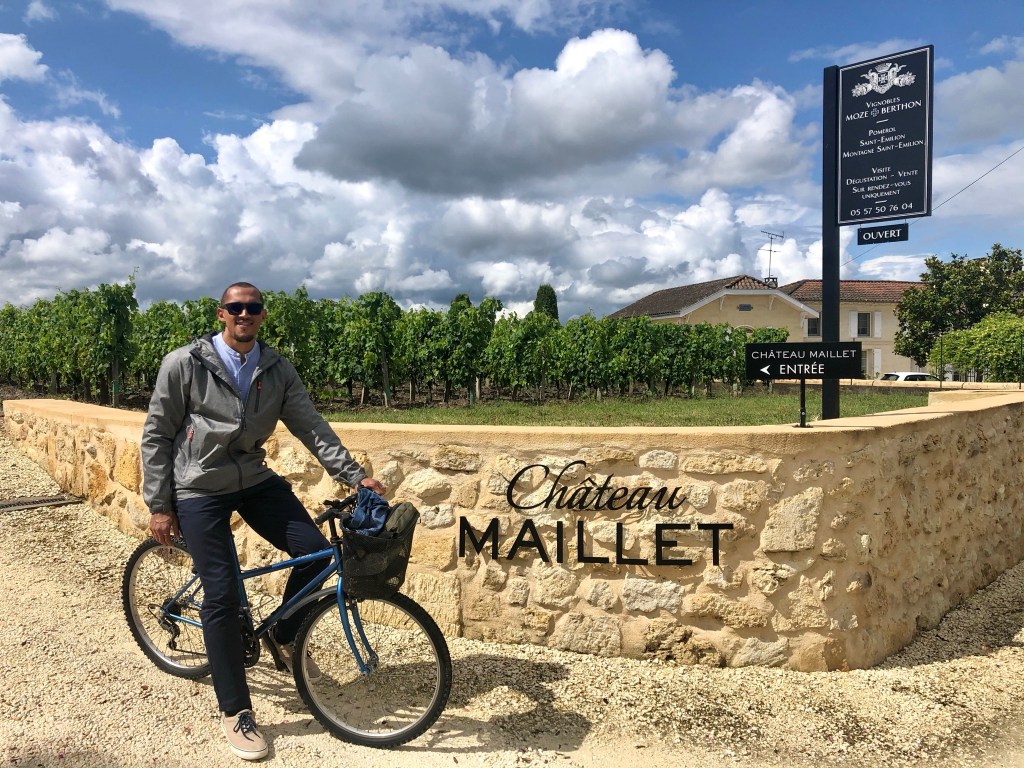
Biking basket loaded down with Chateau Maillet purchases
Our bike basket loaded down with a couple bottles from Chateau Maillet, we pedaled back to the Airbnb with enough time to sample a purchase over a game of Chinese checkers before dinner (let the record show that I won). I can’t say enough positive things about our meal at La Clos Mirande which was just a 10-minute walk from our rental. We were so caught up in enjoying the view and our aperitif on the restaurant’s back patio that we didn’t even realize they were kindly trying to seat us for dinner back inside. Another magical three-course French meal in the books!
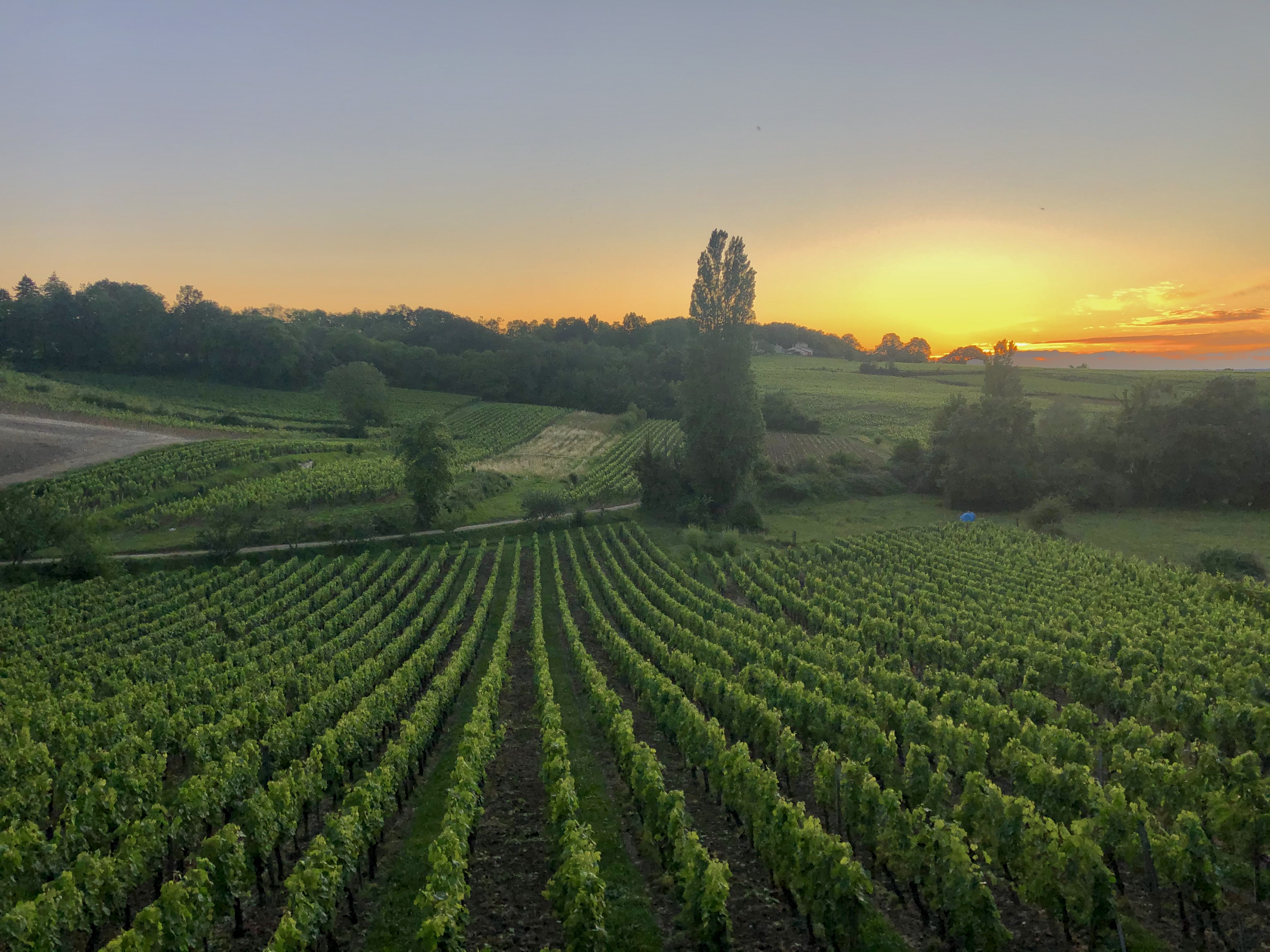


In need of some exercise so my clothes would still fit me by the end of the trip, I began Day 4 with a hilly morning run/walk on the roads through the vineyards before we headed to Saint-Émilion. We grabbed sandwiches at Mie et Merlot bakery and set out on foot for a hike through the hills and valleys of the surrounding vineyards.
I navigated using a high-level terrain map with very descriptive, yet challenging directions downloaded from the Saint-Émilion office of tourism. The route took us through row after row of vines and to scenic overlooks, points of interest like the Les Grottes de Ferrand and finally back through the 13th century Porte Brunet (medieval gate) of Saint-Émilion. We may have had to double back a few times, but that’s to be expected when you’re guided by directions that read “You reach a clay wall, turn right, and walk along the vines. At the bottom of the plot, deviate on your left and cross the first opening in the bushes. Start to climb the hill on your left.”
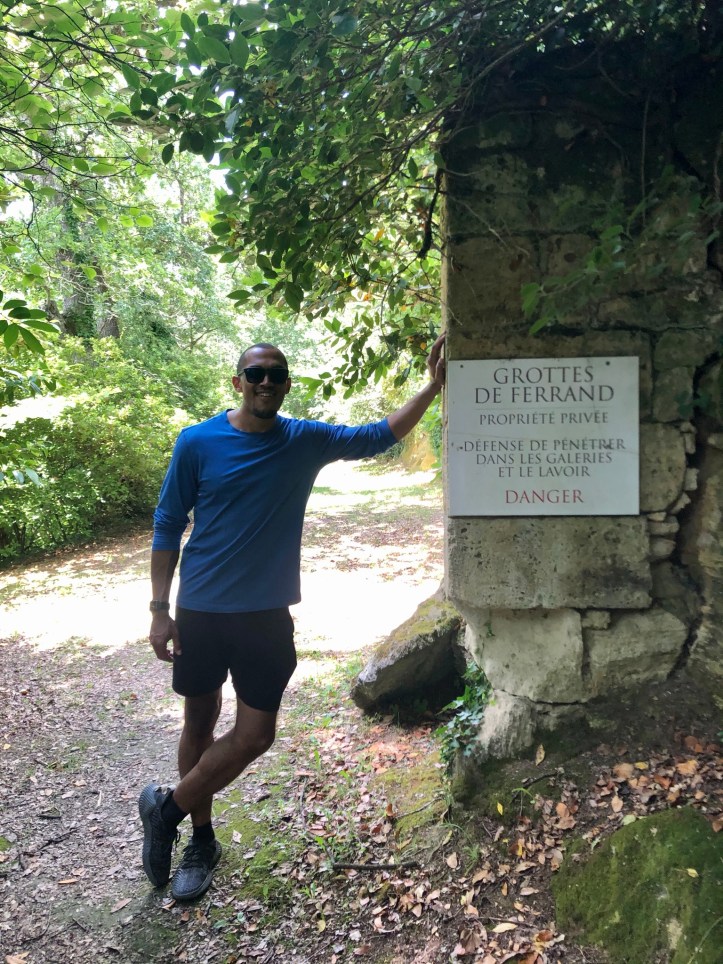
Les Grottes de Ferrand 
These caves were created by Bordeaux nobility in the 17th century for entertainment purposes. The walls now contain carved signatures dating back to the 1700’s.
Wrong turns aside, it was a great opportunity to see the never-ending rows of vines up close and better understand the history of the jurisdiction. Unfortunately for us, many of the historical sites in Saint-Émilion were closed on account of COVID, but there was still no shortage of things for us to see and do in the medieval village and surrounding vineyards.

Laroque – the largest wine estate of Saint-Émilion with 151 acres 
The Porte Brunet (medieval gate) of Saint-Émilion commissioned by England in the 12th century to protect the city 
Hiking the vineyards of Saint-Émilion 
Dan jumping the vineyards of Saint-Émilion
Our circuit completed a few hours later, we freshened up at the Airbnb before hopping back on the bikes to our second vineyard tour at Château Champion, a recommendation of our Airbnb host. Again, we were thrilled to have a private tour with our guide, Christine, who was more than happy to sit down with us over a healthy sampling of their wines and chat about the 7th and 8th generation of family members managing the Château and the impact of climate change on vineyards around the world. While Saint-Émilion is not known for their rosé wines, I couldn’t get enough of their fruity La Rosée de Champion. Having sampled the options, we made our purchases and I was entrusted with transporting our precious cargo back to the Airbnb. Unfortunately, my sagging bike basket couldn’t be relied upon to get the job done, so I ended up delivering the three bottles by hand.
We had luck on our side for our final meal in Bordeaux as we happened to arrive at Le Tertre at the perfect time to snag a cozy outdoor table on the steeply angled but picturesque cobblestone street. By now I’ve lost count of how many three-course meals we’ve consumed, but this one was no less delicious or impressive. Like our other dining experiences, we felt welcomed by the staff and management who were thrilled to be open for business again.
We awoke early on Day 5 in order to allow time for a lengthy commute to the tiny commune of Corcelles-les-Arts in Burgundy with an active break along the way. Vineyards gave way to forested hills as we headed northwest into the Massif Central highland region in the middle of Southern France. This region consists of mountains and plateaus, the highest of which, Puy de Sancy, is part an ancient stratovolcano which has been inactive for approximately 220,000 years. With an elevation of almost 6,200 feet, you can get a decent view from the top.
We decided to take the telepherique (cable car) up and back down, but if we had more time, my preference would have been to ascend or descend on foot or connect to another neighboring summit using the trails. The cable car deposited us close to the top, but we had a short 20-minute ascent across a wooden boardwalk with 860 steps to reach the summit and take in the beautiful scenery and sounds of cowbells tinkering in the distance.

Seeming to always find ourselves eating a late lunch, we were relieved to locate a restaurant at the base of Puy de Sancy in Le Mont-Dore where we dined outside on more galettes ahead of our final overnight of the road trip.
The beautiful landscapes didn’t cease as we entered the Burgundy region of the country and I was glad we took the scenic way via D974 which wound along next to the Dheune waterway. Reaching the tiny town of Corcelles-les-Arts in the Burgundy region that evening, we arrived just in time to partake in a delicious homemade dinner at our Airbnb host’s restaurant. I didn’t manage to capture many photos from dinner because we devoured the three courses quickly, but if you find yourself in Corcelles-les-Arts, just south of Beaune and Dijon, I can highly recommend Kevin’s restaurant, L’aubergiste, and Airbnb, a bakery turned rental apartment. It was obvious that we were the only tourists in town, but we felt at home thanks to the wonderful service and a fantastic bottle of Burgundy wine.

Stop 6 – the small town of Corcelles-les-Arts in Burgundy 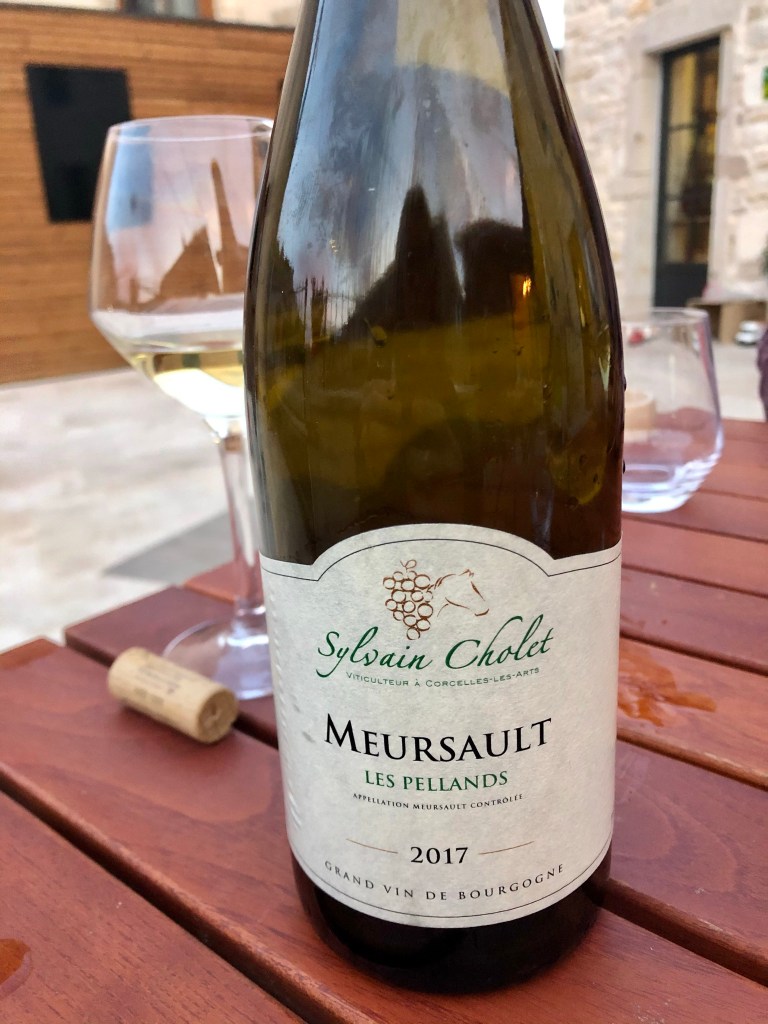
Local wine recommended by Kevin and loved by us 
Dinner in Corcelles-les-Arts at L’aubergiste, run by Kevin, our Airbnb host
I welcomed Day 6, our final day of the trip, by exploring the Corcelles-les-Arts area on an early morning trail run before we packed the car up and headed into Dijon for breakfast and some brief touring. Sightseeing in Dijon is made easy thanks to the city’s symbol, the owl, that marks a historical trail around the old city center. The original owl is carved on the side of the Église Notre-Dame (see photo below) but from there you follow brass plaques of cartoon owls to 22 different marked spots – we made a point of visiting about six of the most prominent.
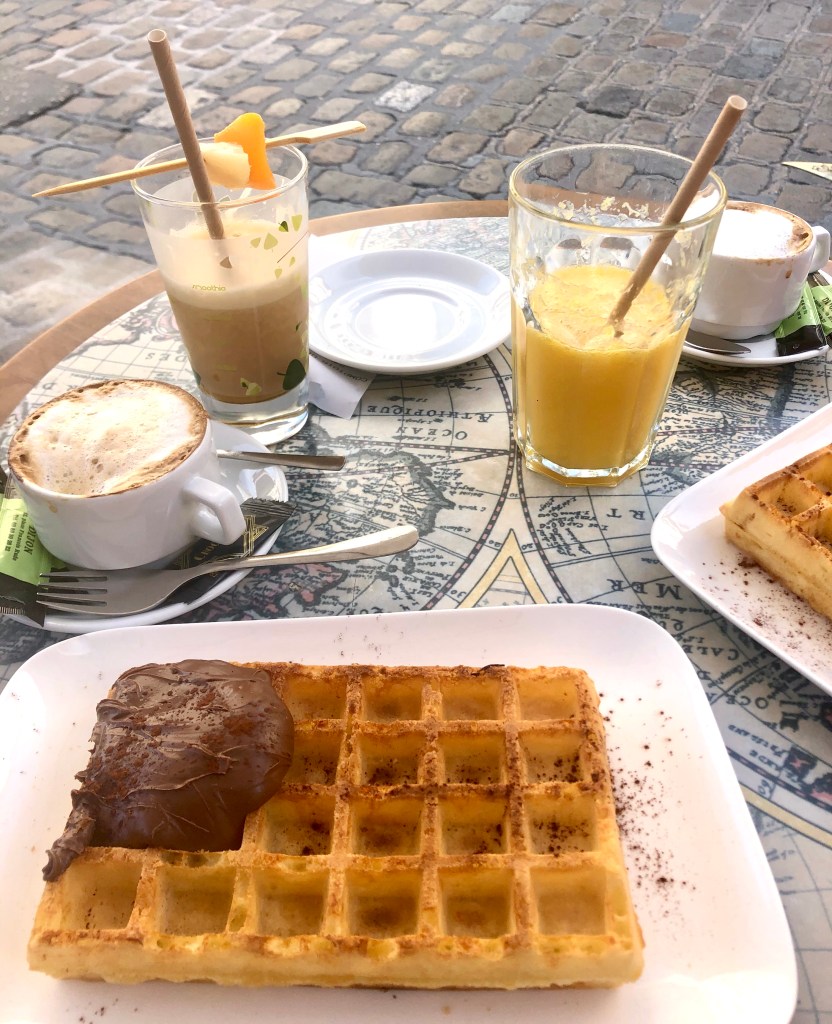
Stop 7 – breakfast waffles and touring in Dijon 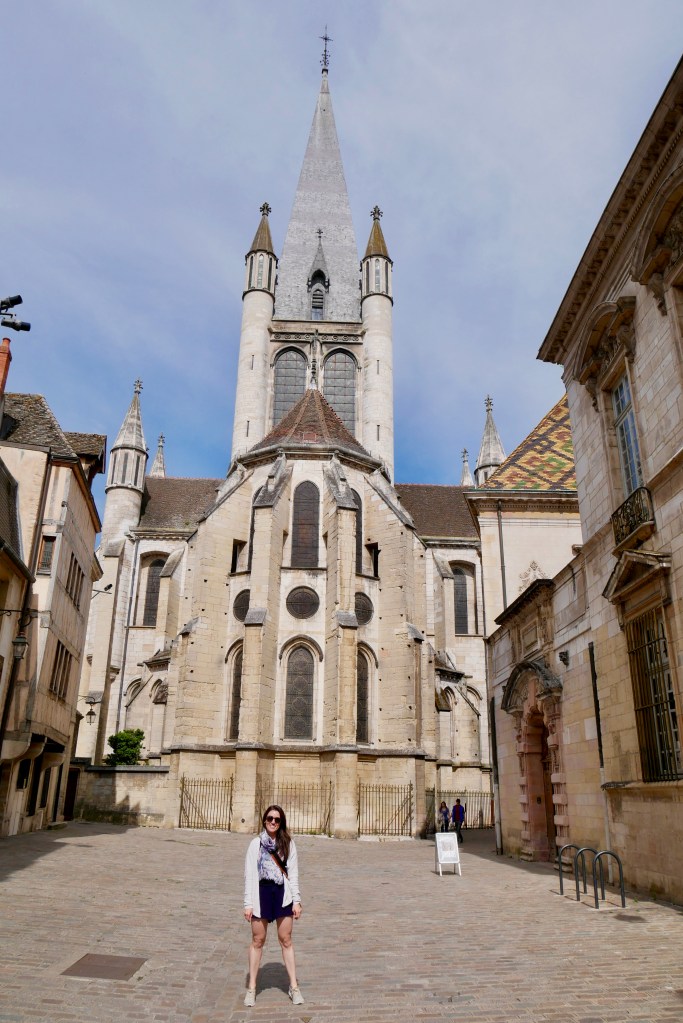
Église Notre-Dame in Dijon 
The original owl carved into the wall at Église Notre-Dame 
Law courts of Dijon
We had hoped to take the 300 stairs to the top of the Tour Philippe le Bon to enjoy the panorama over Dijon but there were tickets had sold out until later in the day and we were unwilling to wait around knowing we still had an over five hour drive back to Brussels. Our final stop in Dijon was for mustard of course!

Timber frame house in Place François Rude in Dijon 
The 51 “dummy” gargoyles (meaning they are decorative rather than drain spouts) adorning the façade represent human beings, animals and monsters
To round out this tour de vineyards, we made a final stop in the Champagne region where, after again struggling to find a place to eat a 3 PM lunch in Épernay, we tracked down the headquarters and vineyards of Cattier in the small town of Chigny-Les-Roses. The Armand de Brignac Champagne, known colloquially as “Ace of Spades” is famously drank and at least partially owned by Jay Z as of 2014. That’s probably as close as we’re getting to Jay Z in our lifetime.
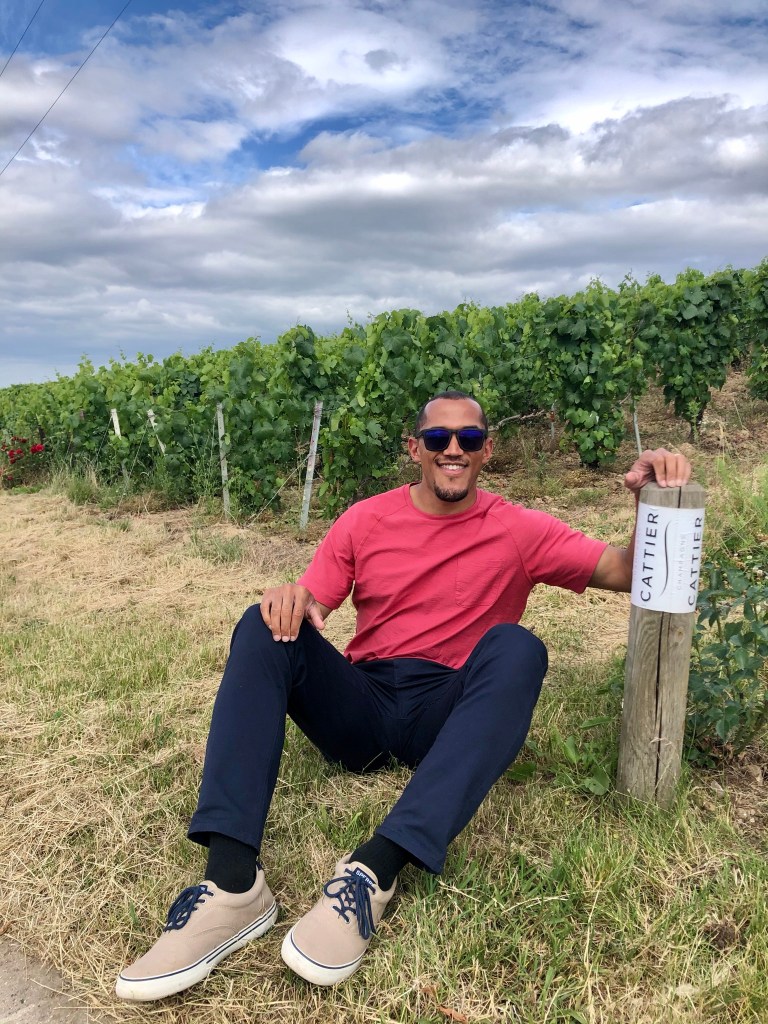
Stop 8 – vineyards of Cattier in the small town of Chigny-Les-Roses 
The Armand de Brignac Champagne made famous by Jay Z
As I finish this recap of our French wine and food circuit, vineyards across France are in the midst of their harvests and I’m craving a gourmet three-course meal comprised of dishes with names I can’t quite pronounce. The time seems right to embrace the nostalgia with a homemade galette slathered in butter and the opening of one of the bottles that survived the journey across the Atlantic in my overweight checked bag that Dan ended up dragging for me.
Looking back now, I am amazed at what we accomplished over the course of a 1,500+ mile road trip. While enjoying the absence of other tourists I relished the abundance of beautiful landscapes. I practiced my French but did not perfect the self-timer on my camera. I may have fallen asleep in the passenger seat, thus repeatedly broke the rule of keeping the driver company, but I also fell in love with France again and gained a deeper appreciation for the unique characteristics and charms of its diverse regions.
